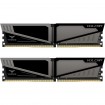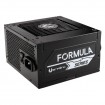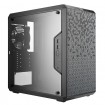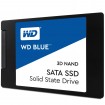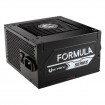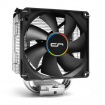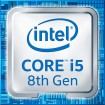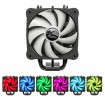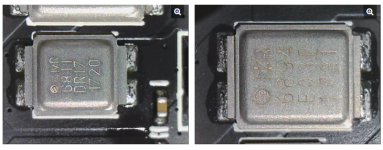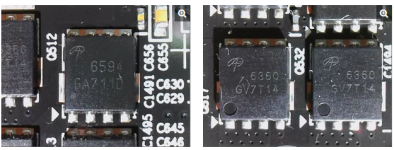Associate
- Joined
- 5 Mar 2019
- Posts
- 6
Hi everyone, i'm currently building an all rounder (Gaming/Workstation) PC and this is what i came up with the research i've done into finding the best mid-tier all rounder PC build.
*Quick question shall I wait to get the EVGA G2 650w Full Modular once it comes back in stock or go with the BitFenix Formula Series 750w or stay with the BitFenix Formula Series 650w?
This is the Monitor that i am currently using:
It's a DELL FULL HD 24 LCD Gaming Monitor: 1920 x 1080p, 144Hz, 1ms, AMD FreeSync, 2 x USB 3.0 with HDMI/ VGA / DisplayPort.
I am using the OCUK TECH LABS AMD RYZEN MIDI TOWER GAMING PC CONFIGURATOR.
Here is my current build: Any suggestion or changes will be greatly appreciated.
Case: Phanteks Enthoo Pro M Glass Midi Tower Case - Black. Any other suggestion?
Motherboard: MSI B450 TOMAHAWK (Socket AM4) DDR4 ATX Motherboard
Processor: AMD Ryzen 5 2600 Six Core/Twelve Thread 3.9GHz Processor (MPK)
Memory: Corsair Vengeance LPX 16GB (2x8GB) DDR4 PC4-24000C15 3000MHz Dual Channel Kit - Black (CMK16GX4M2B30
Graphics: Gigabyte GeForce RTX 2060 WindForce OC 6144MB GDDR6 PCI-Express Graphics Card
CPU Cooler: Cryorig H7 Single Tower Heatsink with 120mm Fan
M.2 Solid State Drive: Samsung 970 EVO Polaris 250GB M.2 2280 PCI-e 3.0 x4 NVMe Solid State Drive. Or get an SSD instead of an NVME?.
HDD: Seagate BarraCuda 1TB 7200RPM SATA 6Gb/s 64MB Cache HDD - *System Stock*
PSU: BitFenix Formula Series 750W 80 Plus Gold Power Supply. Any changes?
Operating System: Microsoft Windows 10 Home Advanced - Systems
https://www.overclockers.co.uk/ocuk...igurator-fs-1aj-og.html#t=a1ub;c6d9e-f8g0h_l#
Any opinions because this is my first time building a PC for gaming games like rainbow 6 siege, witcher 3 wild hunt, tomb raider, Bf5 etc.. and doing everyday work like programming JAVA, Visual BASIC, Unity 3D, microsoft office apps etc..
*Quick question shall I wait to get the EVGA G2 650w Full Modular once it comes back in stock or go with the BitFenix Formula Series 750w or stay with the BitFenix Formula Series 650w?
This is the Monitor that i am currently using:
It's a DELL FULL HD 24 LCD Gaming Monitor: 1920 x 1080p, 144Hz, 1ms, AMD FreeSync, 2 x USB 3.0 with HDMI/ VGA / DisplayPort.
I am using the OCUK TECH LABS AMD RYZEN MIDI TOWER GAMING PC CONFIGURATOR.
Here is my current build: Any suggestion or changes will be greatly appreciated.
Case: Phanteks Enthoo Pro M Glass Midi Tower Case - Black. Any other suggestion?
Motherboard: MSI B450 TOMAHAWK (Socket AM4) DDR4 ATX Motherboard
Processor: AMD Ryzen 5 2600 Six Core/Twelve Thread 3.9GHz Processor (MPK)
Memory: Corsair Vengeance LPX 16GB (2x8GB) DDR4 PC4-24000C15 3000MHz Dual Channel Kit - Black (CMK16GX4M2B30
Graphics: Gigabyte GeForce RTX 2060 WindForce OC 6144MB GDDR6 PCI-Express Graphics Card
CPU Cooler: Cryorig H7 Single Tower Heatsink with 120mm Fan
M.2 Solid State Drive: Samsung 970 EVO Polaris 250GB M.2 2280 PCI-e 3.0 x4 NVMe Solid State Drive. Or get an SSD instead of an NVME?.
HDD: Seagate BarraCuda 1TB 7200RPM SATA 6Gb/s 64MB Cache HDD - *System Stock*
PSU: BitFenix Formula Series 750W 80 Plus Gold Power Supply. Any changes?
Operating System: Microsoft Windows 10 Home Advanced - Systems
https://www.overclockers.co.uk/ocuk...igurator-fs-1aj-og.html#t=a1ub;c6d9e-f8g0h_l#
Any opinions because this is my first time building a PC for gaming games like rainbow 6 siege, witcher 3 wild hunt, tomb raider, Bf5 etc.. and doing everyday work like programming JAVA, Visual BASIC, Unity 3D, microsoft office apps etc..



